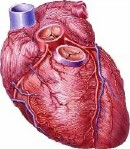Angioplasty Proves Reasonable Alternative to Bypass Surgery
But patients who received stents required more procedures to reopen arteries, study found.
By Amanda Gardner
HealthDay Reporter
|
E-mail this article
Subscribe to news
Printer friendly version
|

(SOURCES: March 31, 2008, teleconference with Seung-Jung Park, M.D., Ph.D., director of interventional cardiology, Asan Medical Center, Seoul, Korea; March 31, 2008, New England Journal of Medicine)
MONDAY, March 31 (HealthDay News) -- For patients with blockages in the left main coronary artery, percutaneous coronary intervention -- PCI, often referred to as angioplasty -- may be a viable alternative to bypass surgery.
"We focused on all-cause mortality and found no difference between PCI and surgery," Dr. Seung-Jung Park, senior author of the study and director of interventional cardiology at Asan Medical Center in Seoul, South Korea, said at a news conference.
However, the study also found that PCI patients who received stents -- tiny wire-mesh tubes used to prop open an artery -- had much higher rates of revascularization, a procedure needed to reopen arteries that had become clogged again. Bare metal stents had the highest rate of revascularization, the study found.
The findings were presented Monday in Chicago at a meeting of the Society for Cardiovascular Angiography and Interventions, in partnership with the American College of Cardiology, and published simultaneously March 31 in the New England Journal of Medicine.
The left main coronary artery provides most of the blood to the heart's left ventricle. Current guidelines recommend coronary artery bypass grafting (CABG) over percutaneous coronary intervention unless a previous graft has been performed.
And until more studies are conducted, CABG should remain the treatment of choice in these patients, the study authors stressed.
Percutaneous coronary intervention, which refers to a number of procedures used to treat arteries, is usually reserved for patients who aren't good candidates for surgery or who are protected by a previous bypass graft. A typical form of PCI -- angioplasty -- involves inserting a catheter into the artery to widen the vessel, and then hold it open with a stent.
But the development of coronary-artery stenting, especially with drug-eluting stents, has led researchers to reassess the role of PCI. Drug-eluting stents slowly release drugs that help keep the artery open.
Currently, there is limited long-term data comparing CABG and percutaneous coronary intervention with stents in patients with left main coronary artery disease.
For the new study, Park and his team compared 1,102 patients with unprotected left main coronary artery disease who underwent stent implantation (318 with bare metal stents and 784 with newer drug-eluting stents) with 1,138 patients who underwent CABG as 12 centers in Korea.
Overall, there were no major differences between the two groups in the risk of death or the risk of an outcome that included heart attack and stroke.
The next step, Park said, is a randomized trial comparing the two procedures.
More information
The American Heart Association  has more on percutaneous coronary intervention.
has more on percutaneous coronary intervention.
Copyright © 2008 ScoutNews, LLC. All rights reserved. 
HealthDayNews articles are derived from various sources and do not reflect federal policy. healthfinder.gov does not endorse opinions, products, or services that may appear in news stories. For more information on health topics in the news, visit the healthfinder.gov health library.